Discovering the best companion plants for snow peas is a cornerstone of successful gardening, offering a myriad of benefits from enhancing soil fertility to natural pest control.
Snow peas, a cherished cool season crop, thrive when integrated with other garden plants that complement their growth requirements and help fend off common insect pests such as pea weevils, Mexican bean beetles, and flea beetles.
This synergistic relationship not only bolsters the garden’s productivity but also enriches the soil with lots of nitrogen, courtesy of the snow pea’s ability to fix nitrogen through its root nodules inhabited by beneficial bacteria, rhizobia.
Snow peas themselves are versatile in the kitchen, savored for their sweet pods and tender seeds that can be enjoyed raw or cooked, adding a crisp, flavorful boost to dishes in cooler weather. However, they demand specific conditions for optimal growth, preferring locations that offer partial shade, moist soil, and protection after the last spring frost to early summer, making them one of the first crops to herald the growing season.
Yet, snow peas are not without their challenges; they are prone to attacks from various insect pests and diseases. This underscores the importance of choosing the best companion plants that can provide a support system, improve water needs management, and enhance pest control through the attraction of beneficial insects.
From the robust tomato plants that can share garden space efficiently to the fragrant pot marigold that serves as a great addition for pest deterrence and aesthetic appeal, companion planting with snow peas offers a holistic approach to a more productive and vibrant home garden.
In this article, we delve into twenty-two good companions that elevate snow pea growth and yield, and identify seven plants to avoid, ensuring your gardening efforts lead to a bountiful harvest and a healthy, flourishing garden bed throughout late spring to early summer and beyond.
Table of Contents
Good Companion Plants for Snow Peas
1. Basil
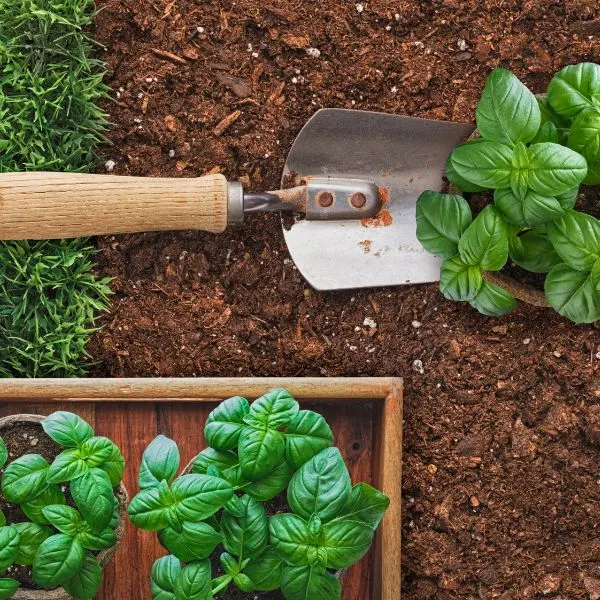
- Botanical Name: Ocimum basilicum
- Sun Requirements: at least 6 to 8 hours of sunlight each day.
- Soil Type: rich, moist, but well-drained soil
Basil, sometimes known as big basil, is a cooking herb of the Lamiaceae family (mints). It is a delicate plant that is utilized in cuisines all over the world. In warmer climates, basil can be cultivated as a short-lived perennial or biennial. Fresh basil is most typically used in recipes.
Thrips are a frequent pest of Snow peas, and they dwell in the blossoms of the plant. Growing basil near your Snow peas can assist with this problem since it has fragrant substances that repel them.
It is also effective in deterring flies and mosquitoes in your area. As a result, Basil is an excellent companion for snow peas.
2. Beans

- Botanical Name: Phaseolus vulgaris
- Sun Requirements: five to six hours of sun or more (around half a day)
- Soil Type: Clay or silt loams and Well drained soil.
A bean is the seed of numerous plants in the Fabaceae family that are used as vegetables for animal or human consumption.
They are used in many traditional recipes across the world and may be prepared in a variety of methods, including boiling, frying, and baking.
Pole beans and bush beans are excellent companion plants for Snow peas since they thrive in comparable environments.
Pole beans, when planted properly, may provide shade for snow peas, which will be needed when the weather warms. Green beans also help to balance the pH of the soil, although they need an acidic soil with a pH between 6 and 7. They are quite simple to cultivate, despite the fact that they require minimal upkeep.
There are several types of beans, ranging from lima, kidney, and butter beans to snap beans and blackeye peas. Some are ideal for growing in pots, while others, such as the pole bean, are ideal for growing in the garden.
Green beans and snow peas require comparable growing conditions. They also add nutrients to the soil by boosting the amount of nitrogen in the soil, causing vegetables to grow and improve around them.
3. Brussels sprouts
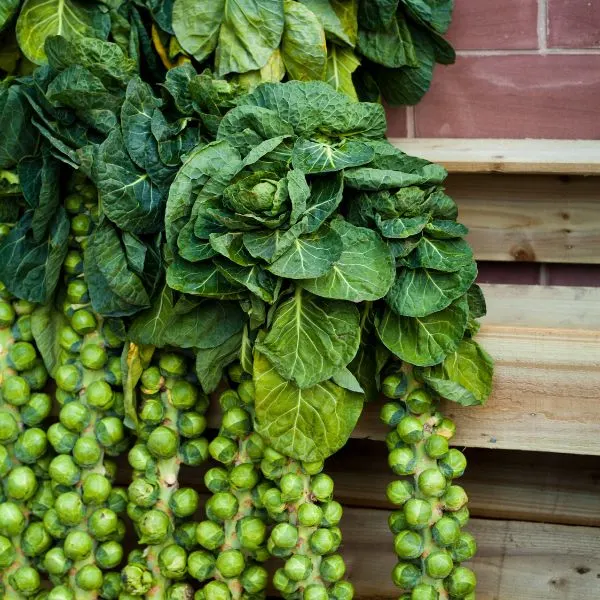
- Botanical Name: Brassica oleracea
- Sun Requirements: Dense clay loam with a few rocks
- Soil Type: Dense clay loam with a few rocks
The Brussels sprout is a cultivar of cabbage (Brassica oleracea) that is produced for its delicious buds. Brussels sprouts have long been well-known in Brussels, Belgium, where they got their name. Boiling, steaming, stir-frying, grilling, slow cooking or roasting are common methods for cooking buds.
Brussels sprouts are heavy feeders and frequently require a significant amount of nitrogen, which leguminous cover crops are abundant in. Planting Brussels sprouts alongside snow peas will help make nitrogen accessible to the sprouts.
Brussel sprouts also assist in loosening the soil and allow the roots of snow peas to penetrate deeper into the soil, which aids in nitrogen fixation.
Just be cautious of aphids; both snow peas and sprouts are susceptible to aphid infestations, so measures should be taken.
4. Cabbage
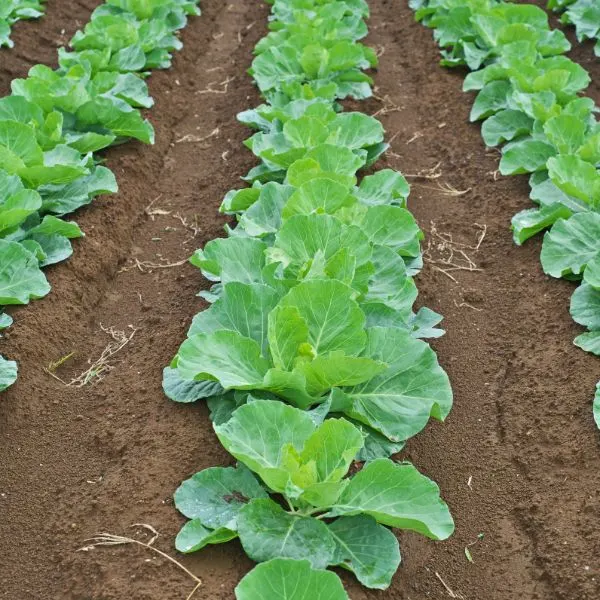
- Botanical Name: Brassica oleracea var. capitata
- Sun Requirements: at least six to eight hours of direct sunlight per day.
- Soil Type: well-drained yet moisture-retentive, fertile soil
Cabbage is a leafy green, crimson (purple), or white (pale green) biennial plant used as an annual vegetable crop for its dense-leaved heads. They are often begun in covered areas early during the growing season before being moved outside, while some are seeded straight into the ground where they will be harvested.
Snow peas fix nitrogen into the soil, making it available to hungry vegetables such as cabbage. Trellis Snow peas may be planted to the south of your cabbage to give shade and keep the shorter veggies cool on hot, bright days.
5. Carrots
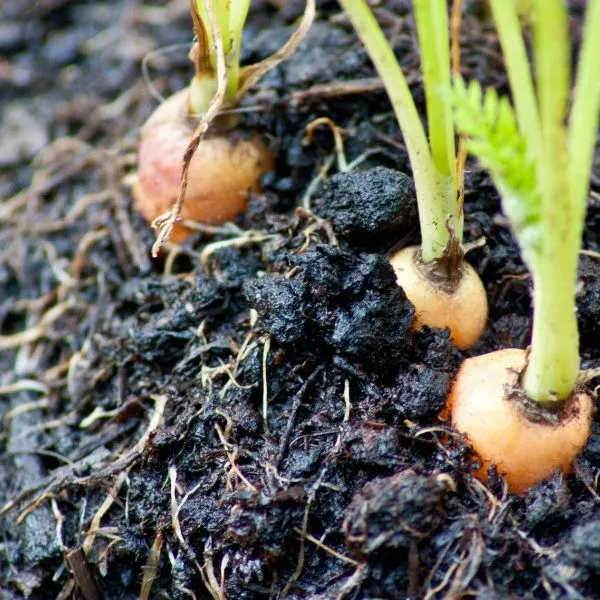
- Botanical Name: Daucus carota
- Sun Requirements: 6 to 10 hours of sun daily
- Soil Type: fertile, well-drained soil.
Carrots are root vegetables that are primarily orange in color; however, purple, black, red, white, and yellow varieties are available. The taproot is the most widely consumed plant portion, while the stems and leaves are also consumed.
Carrots are a biennial cultivated as an annual, and they demand loose, well-draining, somewhat acidic soil. Carrots come in a variety of sizes ranging from one inch to twelve inches, and all portions of the plant are edible.
Carrots and snow peas both thrive in lower temperatures and damp circumstances; not only do they pair nicely in a stew, but both vegetables also make excellent garden partners. Carrots and Snow peas mature in approximately 70 to 80 days when planted together and prefer wet, cold circumstances. Snow peas go well with carrots in the early spring or late fall.
Carrots take time to develop and germinate, but they thrive in rich soil. Prepare the soil and put the seeds straight into the ground for the greatest results. They only require a little attention but ensure the soil is weed-free.
6. Cauliflower
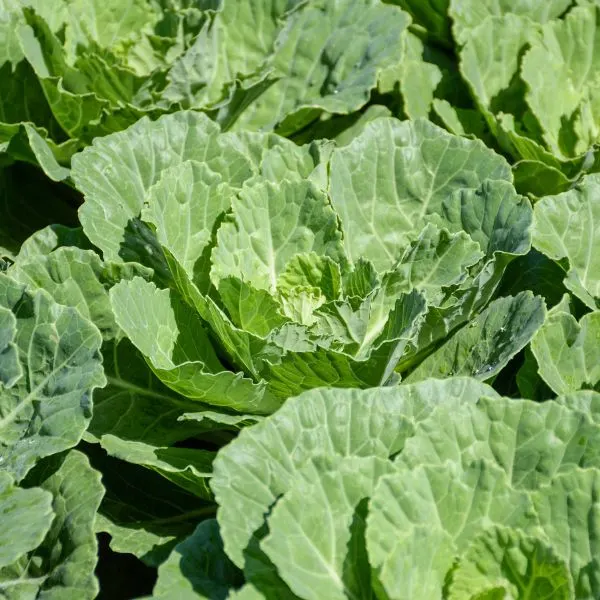
- Botanical Name: Brassica oleracea
- Sun Requirements: at least six full hours of sun each day
- Soil Type: rich, moist, well-drained soil
Cauliflower is one of the numerous vegetables in the genus Brassica, which is part of the Brassicaceae (or mustard) family. It is an annual that propagates by seed. Typically, just the head is consumed – the tasty white flesh known as “curd” (with a similar appearance to cheese curd). Cauliflower heads can be eaten raw, roasted, grilled, boiled, fried, steamed, pickled, or fried.
Members of this family, known as legumes, have a special interaction with bacteria in the soil that allows them to produce readily accessible nitrogen for themselves as well as other plants nearby.
Nitrogen is a crucial macronutrient that acts as a building component of healthy cabbage leaves; thus, growing Snow peas alongside it in your garden is a terrific idea.
However, now that you’ve picked snow peas as a companion plant for cabbage, avoid using nitrogen-rich fertilizer in the vicinity; otherwise, your vegetables may produce a lot of leaves but little product.
7. Celery
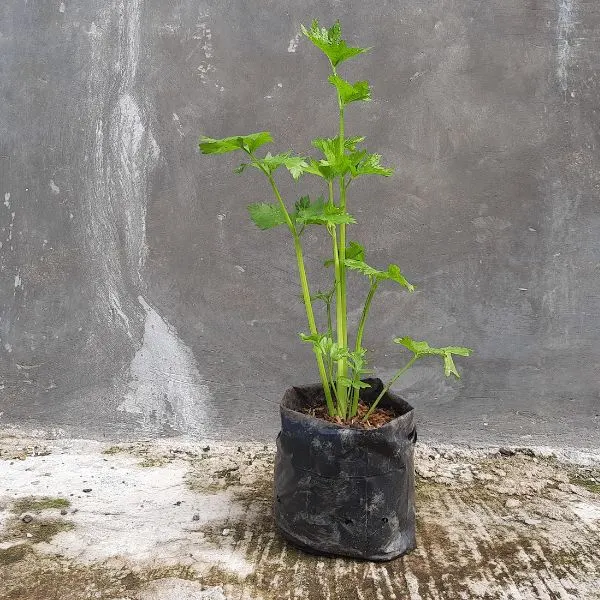
- Botanical Name: Apium graveolens
- Sun Requirements: at least 6-8 hours of direct sunlight per day
- Soil Type: compost-rich, moisture-retentive soil
Celery is a wetland plant of the Apiaceae family that has been used as a vegetable since ancient. Depending on the locale and cultivar, its stalks, leaves, or hypocotyl are consumed and cooked. As a spice, celery seed powder is used.
Celery helps to keep snow pea pests at bay, allowing the snow peas to grow stronger and produce more.
As a result, celery is an excellent companion plant for snow peas.
8. Cilantro
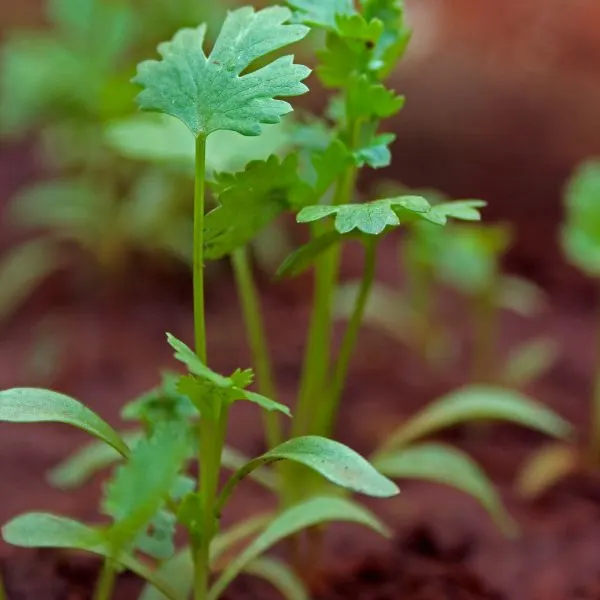
- Botanical Name: Coriandrum sativum
- Sun Requirements: at least 6 to 8 hours of direct sunlight
- Soil Type: airy, light, fast-draining soil with plenty of perlite or sharp sand mixed in to increase drainage
Cilantro is an annual plant of the Apiaceae family. Chinese parsley, dhania, and coriander are other names for it. Although all parts of the plant are edible, the fresh leaves and dried seeds (which serve as both a herb and a spice) are the most commonly used in cooking.
Growing cilantro beside Snow peas is advantageous since Snow peas flourish with fragrant plants. Pests like thrips prey on Snow peas, but the pungent aroma of cilantro repels them, helping your Snow peas to grow bigger and healthier. Cilantro grows swiftly in cold temperatures and may be planted in both spring and fall.
Companion planting Snow peas with Cilantro can also improve the flavor and quality of your Snow peas, making them an excellent companion plant for Cilantro.
9. Corn

- Botanical Name: Zea mays
- Sun Requirements: at least 6 to 8 hours of direct sunlight.
- Soil Type: well drained and fertile, Sandy and Loamy soil.
Corn, commonly known as maize, is a widely grown crop that is utilized in the production of ethanol and other biofuels. Corn is now a staple food in many regions of the world, with maize output exceeding wheat or rice. It is also used to make cornstarch, which is a common ingredient in both home-cooked food and many industrialized foods.
A sweet corn plant is an excellent addition to the vegetable garden, and it makes an excellent companion plant for Snow peas because it acts as a natural trellis for the pea tendrils and provides shade on hot afternoons. In exchange, pea plants fix nitrogen in the soil, which aids corn growth.
Snow pea plants, whether alive or dead, can benefit corn. When these plants are alive, they add nutritional nitrogen to the soil and continue to nourish the ground long after the pea plant has withered and blown away.
Corn, on the other hand, requires a lot of areas, growing six to eight feet tall, and a big bed is required for maximum development. There are many different cultivars available, some of which are disease-resistant and have early harvests. It does best in full sun and loamy, well-drained soil.
10. Cucumbers

- Botanical Name: Cucumis sativus
- Sun Requirements: at least 6-8 hours of direct sunlight per day)
- Soil Type: loose, well-drained, and well-supplied with organic matter and plant nutrients.
The cucumber is a popular creeping vine plant in the Cucurbitaceae family that produces cylindrical fruits that are used in cooking. The cucumber is an annual plant with three major varieties—slicing, pickling, and seedless—from which other cultivars have been developed. It is frequently perceived, cooked, and eaten as a vegetable.
Snowfall and cucumbers Snow peas thrive in the same climate and have comparable watering and nutritional requirements, making them great partners. Both grow nicely on a trellis, and when the temperature rises, the cucumber leaves may provide shade for the snow peas.
Cucumbers will not have to fight for nitrogen with pea plants since pea plants may conduct nitrogen fixation. Cucumbers, in turn, aid pea plants by warding off the hazardous fungus that might infect them.
11. Eggplants

- Botanical Name: Solanum melongena
- Sun Requirements: a minimum of six hours of sunlight per day.
- Soil Type: well-drained sandy loam or loam soil that is fairly high in organic matter.
Eggplant is a plant species of the nightshade family Solanaceae. Eggplant is poor in macronutrients and micronutrients, but its propensity to absorb oils and tastes into its flesh by cooking enhances its usage in the culinary arts.
The spongy, absorbent fruit, which is most typically purple, is utilized in a variety of cuisines. Typically used in cooking as a vegetable,
Because eggplant requires a lot of nitrogen to grow, many gardeners use fertilizers to help it grow. However, growing Snow Peas as a companion plant to Eggplant will provide additional nitrogen to the soil and help you save money on fertilizer.
They, like snow peas, require well-drained, loam soil to grow.
As a result, you won’t have any issues with their developing needs, making them fantastic partners for each other.
12. Lettuce

- Botanical Name: Lactuca sativa
- Sun Requirements: 6 to 8 hours of direct sunlight each day.
- Soil Type: loose, cool soil with good drainage.
Lettuce is an annual plant of the Asteraceae family. It is most commonly cultivated as a leaf vegetable, although it is also produced for its stem and seeds. Lettuce is most commonly used in salads, but it may also be found in soups, sandwiches, and wraps; it can even be grilled.
Lettuce and other leafy greens thrive in similar growth circumstances as snow peas. Trellises with plants that grow up them will shade Lettuce, which bolts rapidly in the summer heat. They also cover the ground to keep the soil moist while giving shade for Lettuce.
13. Marigolds

- Botanical Name: Tagetes spp
- Sun Requirements: at least six hours of sunlight each day.
- Soil Type: moderately fertile, well-drained soil.
Marigold is a blooming plant of the Asteraceae family of daisies. The florets of pot marigolds are edible. They are frequently used as a garnish or to give color to salads. The leaves are edible; however, they are typically bitter. They’ve been used as a potherb and in salads for centuries. Tea is also made from plants.
Marigolds are an excellent companion plant for Snow peas because they repel the Mexican bean beetle, nematodes, cabbage worms, and other common pests. They also prevent deer, rabbits, and squirrels far from your plants while also keeping the area mosquito-free.
Marigolds are fast-growing plants that require little care to thrive, and they look beautiful as a border around your crops. They are annual plants that will fill the room with vibrant yellow, orange, and red colors all through the summer if planted in full light.
14. Mint

- Botanical Name: Mentha piperita
- Sun Requirements: 6-8 hours a day
- Soil Type: moist, well-drained soil that has been enriched with compost.
Mentha (commonly known as mint) is a plant genus in the Lamiaceae family (mint family). Mint is used in cooking as a fresh or dried leaf. When storage is not an issue, fresh mint is generally preferred over dried mint. The leaves are used in teas, drinks, jellies, syrups, sweets, and ice creams because they have a warm, fresh, fragrant, sweet flavor with a chilly aftertaste.
Snow pea plants thrive in the presence of aromatic herbs such as mint. Pests that feed on pea plants, such as aphids and thrips, avoid mint because of its pungent smell. Fragrant mint plants require relatively little maintenance to develop. It grows well in full light and is essential in herb gardens.
Furthermore, mint can help repel rodents, which is like eating Snow pea plants. This reduces the chance of losing excellent snow peas to devouring guests like rats and increases production significantly.
15. Nasturtiums
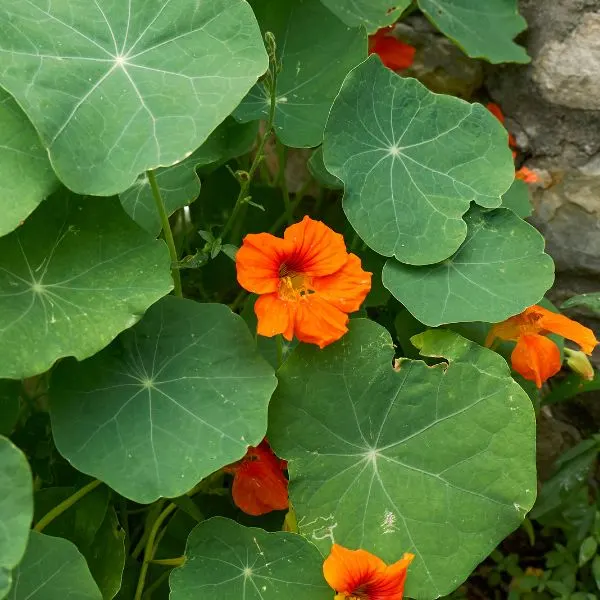
- Botanical Name: Tropaeolum majus
- Sun Requirements: at least eight hours a day
- Soil Type: A free-draining neutral soil.
Nasturtium is a genus containing a limited wide variety of plants in the family Brassicaceae (cabbage family), generally known as watercress or yellowcress.
Nasturtiums are an attractive boundary plant for your snow pea plants. They keep aphids apart from your snow peas by attracting them to nasturtiums rather than nearby snow pea plants.
Nasturtiums also produce an airborne chemical that repels cucumber beetles, asparagus beetles, potato beetles, cabbage loopers, and other harmful insects, making them an excellent companion plant for snow peas.
16. Parsnip
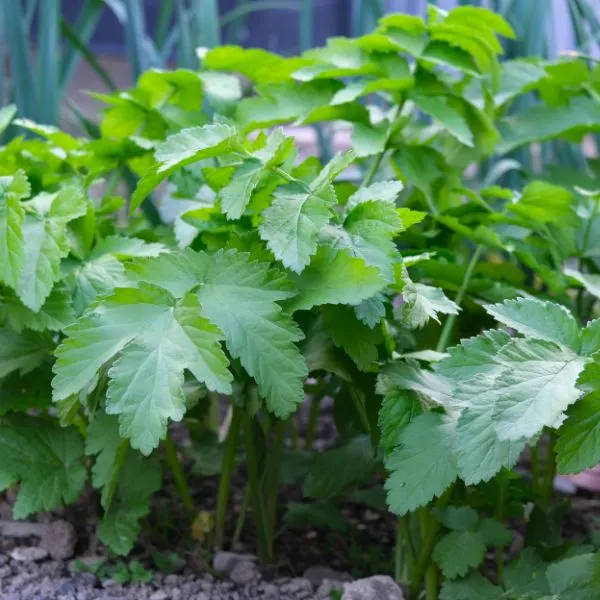
- Botanical Name: Pastinaca sativa
- Sun Requirements: At least six hours of sun per day
- Soil Type: free-draining, well-worked soil with no stones.
Parsnip is a root vegetable related to carrot and parsley, all of which are members of the Apiaceae flowering plant family. It is a biennial plant that is commonly planted as an annual. Parsnips are often cooked, although they can also be consumed raw. The flesh has a sweet flavor, much sweeter than carrots, yet the flavor is distinct.
Snow peas have a special interaction with soil bacteria that allows plants to offer easily accessible nitrogen for themselves as well as neighboring parsnips.
Nitrogen is an essential macronutrient that acts as a building component of healthy parsnip foliage, so if you pick parsnip as a companion plant for snow peas, you will need to apply nitrogen-rich fertilizer sparingly or not at all. And while nitrogen-rich fertilizers are still utilized, you may notice that your vegetables produce a lot of foliage but little fruit.
Companion planting Snow peas with parsnip also helps to save fertilizer costs and make gardening easier. Parsnip also helps to soften the soil for the roots of your snow pea plants.
17. Peppers

- Botanical Name: Capsicum annuum
- Sun Requirements: 6-12 hours of direct sunlight daily.
- Soil Type: well-drained, rich soil that’s more sandy or loamy
The bell pepper (also known as paprika or sweet pepper) is the fruit of the species Capsicum annuum, which grows in the Grossum Group. The plant’s cultivars yield fruits in a variety of hues, including red, yellow, orange, green, white, chocolate, candy cane striped, and purple. Bell peppers are frequently used in garden salads and as pizza toppings.
Because of the repellent fragrance and feeling peppers provide, it helps to keep pests such as aphids and spider mites away from your snow peas in the garden, which also helps to keep the yield of your snow peas in check and decreases disruptions.
Furthermore, Snow peas, like any other legume, offer the soil with its Nitrogen requirements, making it highly cost-efficient in terms of fertilizing your pepper plants.
18. Potatoes
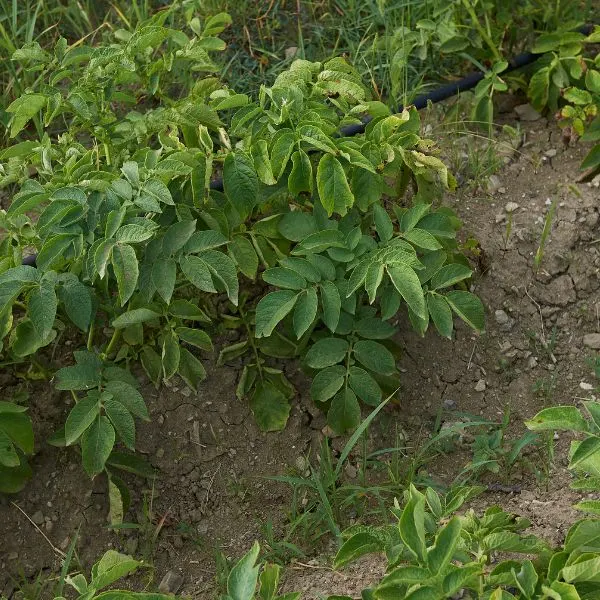
- Botanical Name: Solanum tuberosum
- Sun Requirements: at least 6 hours of direct sunlight each day.
- Soil Type: well-drained, sandy soil.
The potato is a starchy root vegetable native to the Americas that is a tuber of the plant Solanum tuberosum. The plant is a perennial of the nightshade Solanaceae family. Potatoes can be prepared in a variety of ways, including skin-on or peeled, whole or sliced up, with or without spices. Most potato meals are served hot, although others, such as potato salad and potato chips, are cooked first and then served cold (crisps).
Potatoes are among the tubers that help to loosen the soil due to their store tubers, allowing snow pea plants to penetrate the earth readily. The nitrogen that snow peas contribute to the soil is also beneficial to potatoes.
Furthermore, potato plants repel the Mexican bean beetle, which is a pest of many legumes, including snow peas. As a result, potatoes make excellent companion plants for snow peas.
19. Radish
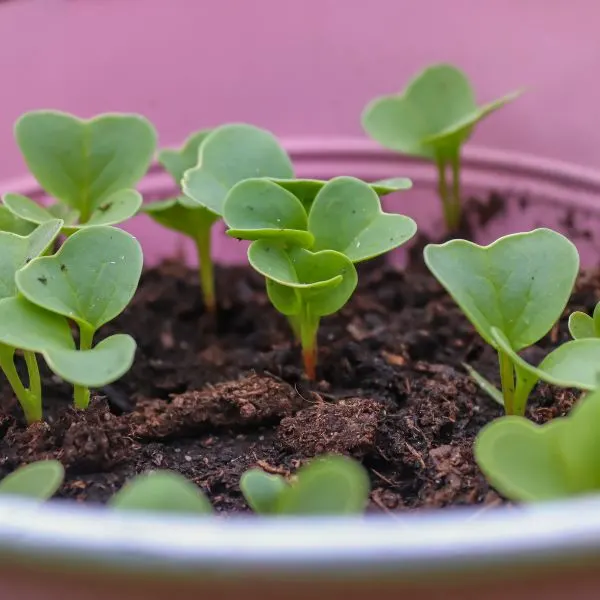
- Botanical Name: Raphanus sativus
- Sun Requirements: at least six hours of sun a day
- Soil Type: lighter, sandy, well-drained soils.
The radish is an edible root vegetable of the Brassicaceae family. Radishes are cultivated and consumed all over the world, usually as a crisp salad vegetable with a pungent, somewhat spicy flavor that varies in strength depending on the growing region. There are several types, each with its own size, flavor, color, and maturation period.
Snow peas give nitrogen to the soil, which radishes adore. They defend snow pea plants from aphids while benefiting from pea plants’ nitrogen-rich soil.
Because radish roots grow swiftly and pea roots grow slowly, neither plant has to fight for soil space. This causes the radish roots to loosen the soil, allowing the snow pea roots to penetrate.
20. Spinach
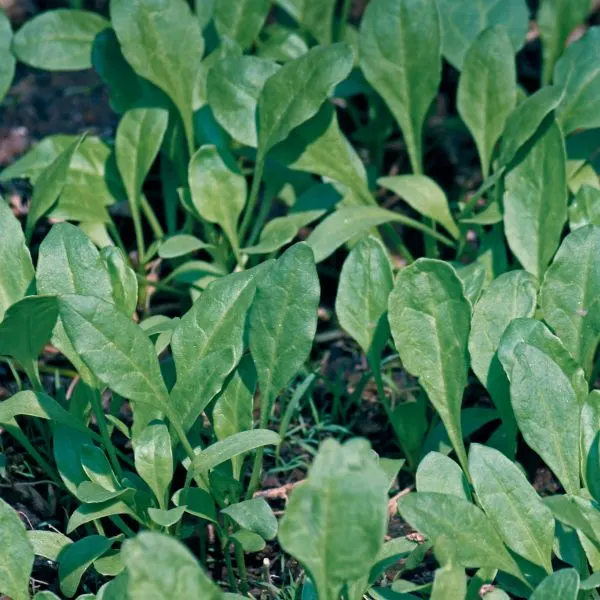
- Botanical Name: Spinacia oleracea
- Sun Requirements: 4 and 6 hours of sunlight
- Soil Type: moist, nitrogen-rich soil.
Spinach is a blooming plant with lush green leaves that is native to Central and Western Asia. Its leaves are a popular culinary vegetable that may be eaten fresh or after being preserved by canning, freezing, or dehydration. It may be eaten cooked or raw, and the taste varies greatly; heating might lessen the high oxalate level.
Growing spinach near snow pea plants results in nitrogen-rich soil and shade in hotter weather. Spinach may also be used as a ground cover for snow pea plants since it keeps the soil wet and functions as a weed preventative.
Snow peas also help spinach grow quicker and healthier with better leaves by fixing nitrogen in the soil. It’s also well-known for its high iron content and flexibility in cooking. Even better, spinach is less prone to pests and illnesses than other vegetables.
21. Tomatoes

- Botanical Name: Solanum Lycopersicum
- Sun Requirements: at least eight hours a day
- Soil Type: well-drained, fertile, sandy loam
Tomatoes are the edible berries of the plant Solanum Lycopersicum, often known as the tomato plant. They are eaten raw or cooked and in a variety of cuisines, sauces, salads, and beverages. While tomatoes are technically fruits (botanically classed as berries), they are most typically utilized in cooking as a vegetable element or side dish.
Tomato and snow pea plants complement each other well and aid each other in a variety of ways. Tomatoes are big feeders, while Snow peas provide substantial nitrogen enrichment to the soil. Snow peas can be planted alongside tomatoes to help balance out the crop.
Tomatoes and snow peas complement each other wonderfully. Tomatoes have a strong odor that repels pests from other plants, including pea plants. There are several hybrid and heritage tomatoes, ranging in size from cherry and Roma to beefsteak. All kinds require full light to develop and mature in 60 to 100 days.
22. Turnips
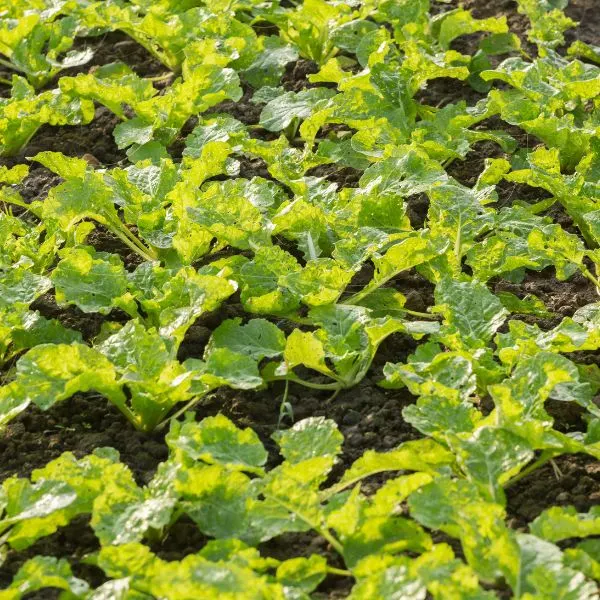
- Botanical Name: Brassica rapa
- Sun Requirements: at least 6 hours of sun.
- Soil Type: cool, moisture-retentive soil.
The turnip, often known as the white turnip, is a root vegetable produced in temperate climes across the world for its white, meaty taproot. Northern Europe may have been the first to develop edible turnips.
Turnips are a natural repellant to aphids, which are prevalent insects in most yards or gardens and can destroy your snow peas. They also assist in cracking and loosening the soil, allowing your snow pea roots to penetrate deeper into the earth.
Snow peas add nitrogen to the soil surrounding turnips. Turnips, like nitrogen-fixing snow peas, will grow nicely at the foot of your pea trellis.
Bad Companion plants for Snow Peas
1. Chives

Although chives can help repel aphids from snow peas, chives or any member of the Allium family can inhibit pea development, which can negatively alter pea growth behavior.
Plants such as radishes and turnips can be used instead of chives to repel pests.
2. Garlic
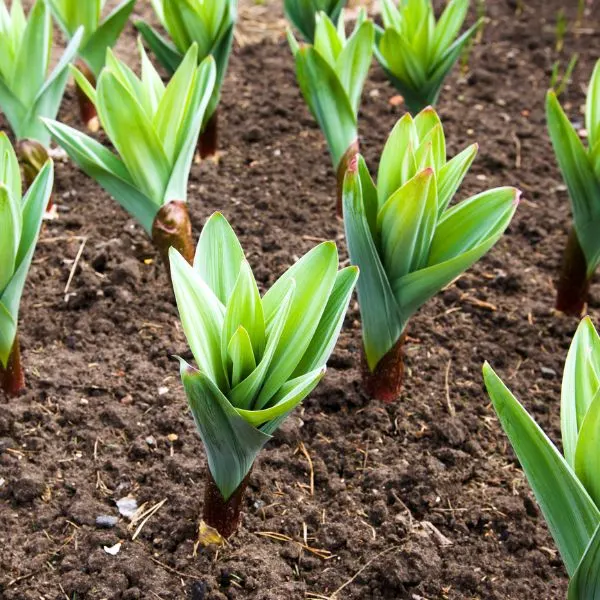
Garlic, which belongs to the Allium Family, may impede the growth of snow peas and most other legumes if planted together. Also, because they both rely on the same nutrients as snow peas, they will compete for resources in the soil.
3. Leeks
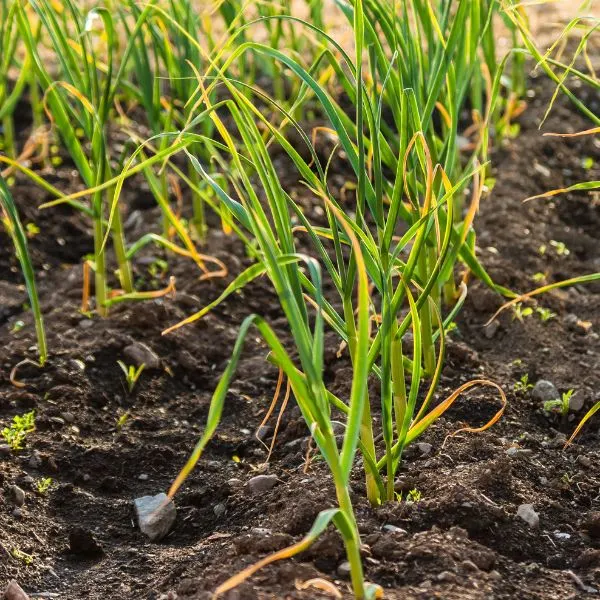
All snow peas use a bacterium prevalent in most soils to fix nitrogen in the air. Members of the allium family, particularly leeks, destroy these bacteria in the soil, which is likely due to alliums’ high sulfur content.
This will restrict snow pea development and reduce the amount of nitrogen they quickly fix to the soil.
Aside from that, leeks and peas both attract pests in the garden.
4. Onions
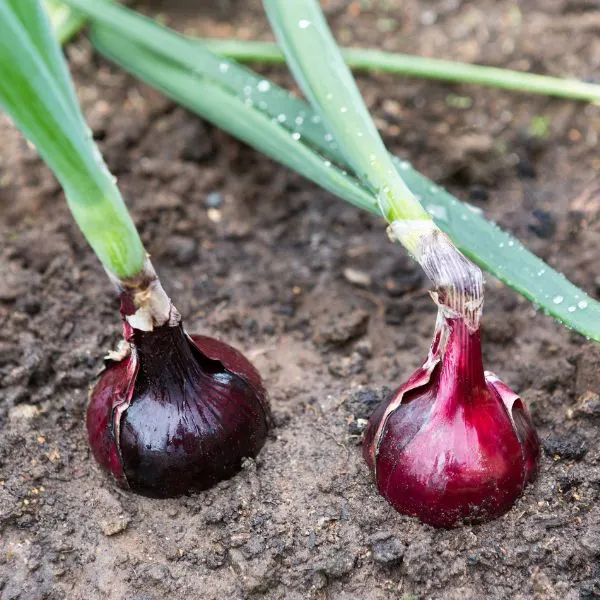
Onions can harm the beneficial bacteria that grow the roots of Snow peas and other legumes, slowing their development. Because legume plants fix nitrogen in the soil and onions are big nitrogen feeders, onions are an excellent choice to plant after plucking your legume plants.
5. Scallion
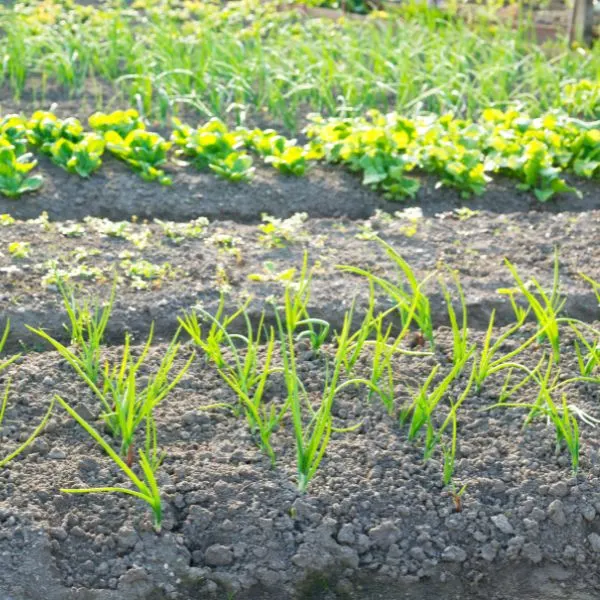
Scallion Emits harmful components into the soil, affecting snow pea development and making nutrients in the soil harder to reach due to the poisonous substances they release when planted near Scallion.
6. Shallots
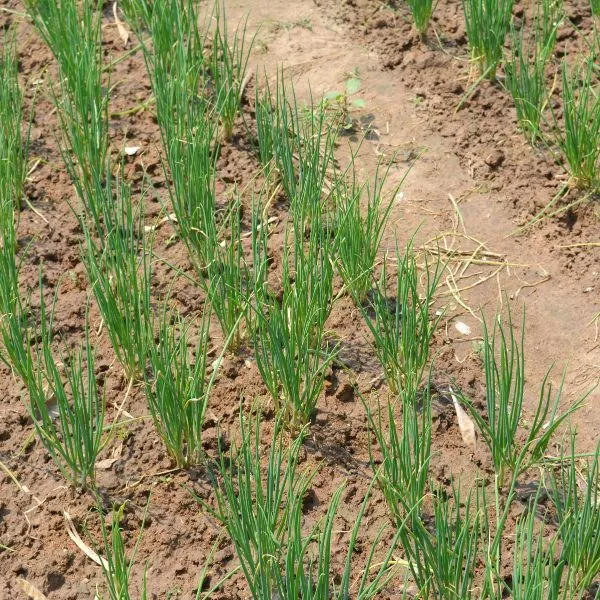
Shallots demand the same soil resources as snow peas, making these nutrients scarce and competitive in the soil. This makes Shallots an unsuitable companion plant for Snow Peas since they will compete for the same nutrients, causing both plants to develop slowly.
FAQs
Do snow peas need a trellis?
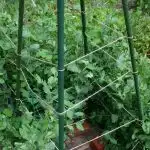
Most snow pea varieties require a trellis for the vines to climb on. This doesn’t have to be fancy; you can make a tomato cage out of sticks and twine. Snow peas can be grown in containers.
Do snow peas grow back every year?
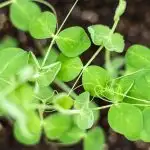
These remarkably tasty annual plants require very little extra care or attention. You can also save your own seeds for the following year. To begin, keep in mind that snow peas prefer colder weather, which means you should start sowing them early.
What is the best month to plant snow peas?
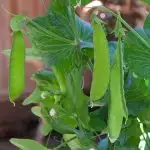
It is critical to plant them early in the spring so that they mature while the weather is still cool. (In most parts of the United States and Canada, this implies planting in February, March, or April.) In warmer climates, they can also be grown as a fall or winter crop.
Should you prune snow peas?
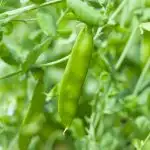
While snow peas do not need much pruning, many people harvest pea tendrils or shoots. These tender and flavorful young plant parts are an edible and excellent complement to salads or other culinary pleasures.
Do snow peas like fertilizer?
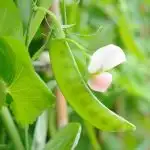
Fertilizing: When grown in soil, snow peas require little to no fertilizer. If grown in a container, a modest dosage of fruiting plant fertilizer, such as 5-10-10, can be used early in the growth cycle.
Are coffee grounds good for snow peas?
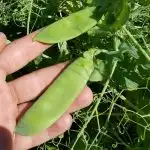
Snow peas appear to grow swiftly, blossom, fertilize, and fruit. Please consider directly putting coffee grinds into plants. Dig them into the soil to prevent a crust from developing on top. They will soon decompose, releasing their nutrients into the soil and drawing worms to the garden.
How do you increase snow pea production?
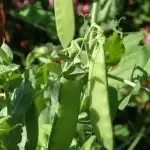
DAP fertilizer at a dosage of 250kg per hectare is advised for root growth at planting time and again after one month. Plants should be clothed with can at a rate of 200kg per hectare during the blossoming period. All fertilizers should be well incorporated into the soil.
Wrapping up
Snow Pea belongs to the Leguminous plant family, and it is notable for having edible pods that lack inedible fiber, along with sugar snap peas and unlike field and garden peas. We have been able to look into Twenty Two (22) Good companion plants for Snow peas and also Six(6) Bad companion plants for Snow peas.
Snow peas have a high nutritional content, including vitamin A, vitamin C, iron, potassium, dietary fiber, magnesium, folic acid, and trace amounts of good fats. These pods are likewise incredibly low in calories, containing just more than one calorie per pod. They are also cholesterol-free, giving them a satisfying but healthy nutritional component.
Snow peas provide several health advantages, including weight loss, enhanced heart health, less constipation, stronger bones, increased immunity, and lower levels of inflammation.
They are cool-season vegetables that can withstand frost. Growing snow peas is easier than growing other types of peas. Before planting snow peas, be sure the temperature will not drop below 45 degrees F and that there is no possibility of frost in the region. This crop is best sown in late winter, approximately a month before the final frost.
More companion plants
